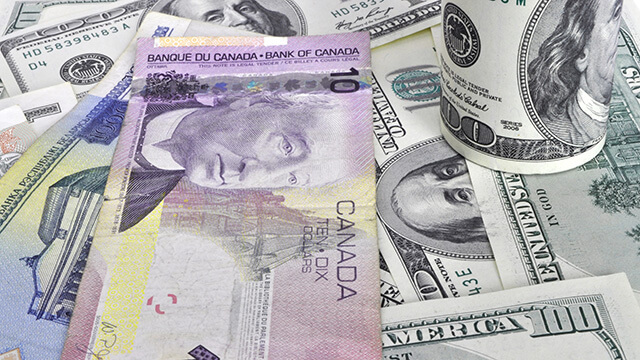
 365
365
USD/CAD Strengthens as Oil Prices Drop and US Dollar Gains Momentum
The USD/CAD currency pair has gained momentum in recent trading sessions, reaching approximately 1.3830 during Asian hours on Tuesday. This appreciation is largely influenced by the Canadian Dollar’s weakness amid declining oil prices, as Canada is a major exporter of crude oil to the United States. The recent slide in oil prices has weighed on the commodity-linked currency, prompting the USD to strengthen against the CAD.
Oil markets are experiencing a downturn, with West Texas Intermediate (WTI) crude trading around $61.90 a barrel, marking its fifth consecutive session of decline. The price decline reflects easing concerns over oversupply, particularly amid reports that Iraq may add approximately 230,000 barrels per day to global supply by resuming exports through Kurdistan after over two years of halts. Additionally, Iraqi exports under the OPEC+ framework remain elevated, with September shipments estimated between 3.4 and 3.45 million barrels per day.
Despite oil’s softer tone, the US dollar has found support after recent cautious comments from Federal Reserve officials. The markets are awaiting the release of key economic indicators, including September’s preliminary PMI data and the August Personal Consumption Expenditures (PCE) Price Index — the Federal Reserve’s preferred measure of inflation. These reports are expected to shed light on the American economy’s current health and the trajectory of inflation, influencing future monetary policy decisions.
Federal Reserve officials reiterated caution, highlighting that inflationary pressures are likely to persist for now. Such comments suggest that the Federal Reserve may maintain a cautious stance on policy tightening, which could affect the dollar’s trajectory. Meanwhile, market participants remain attentive to economic indicators and policy signals that could influence the Federal Reserve’s monetary stance in the coming months.
In Canada, the currency’s movements are closely tied to interest rate decisions by the Bank of Canada, oil price developments, and broader economic indicators. With oil being Canada’s most significant export, fluctuations in oil prices directly impact the Canadian economy and its currency. Higher oil prices generally support the CAD, especially if they contribute to a positive trade balance. Conversely, economic data such as GDP growth, employment figures, and PMI surveys continue to influence market sentiment and currency strength, with a strong economy favoring a higher-valued Canadian dollar.














